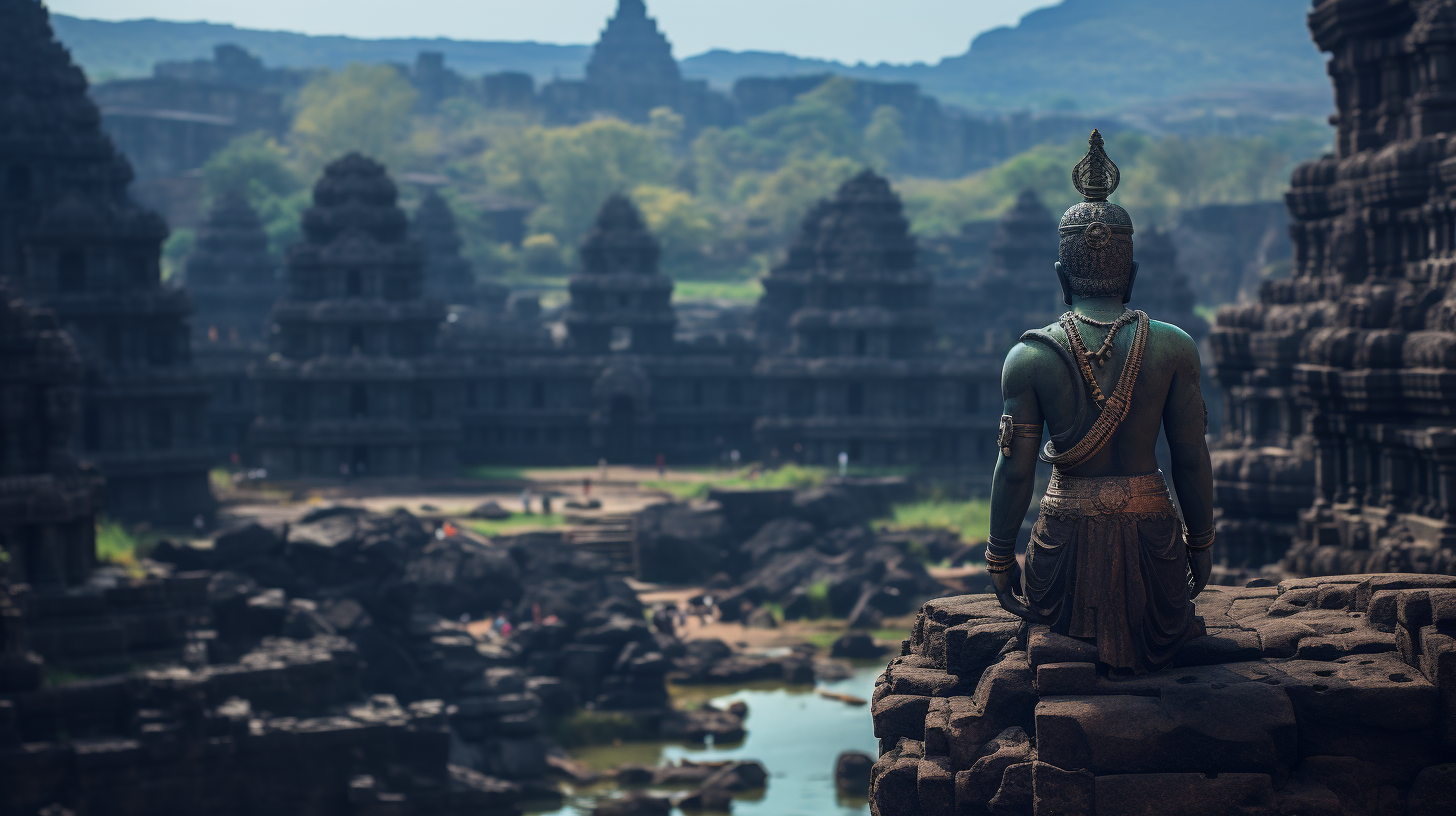In the heart of India, beneath the watchful eyes of Ellora Caves, stands a marvel that has captivated historians and archaeologists for generations. The majestic Kailasa Temple, an ode to Lord Shiva, not only showcases human ingenuity but also hints at deeper significance. This piece aims to probe into the secrets veiling this extraordinary edifice, shedding light on its origins and the remarkable feats associated with its inception.
The Kailasa Temple, an astounding creation hewn entirely from a colossal monolithic rock, rises as a monumental sanctuary dedicated to Lord Shiva over three magnificent tiers. Surpassing the Parthenon in Athens, it commands both awe and devotion. The suggested construction duration of just 18 years astonishes scholars.
The computations backing this claim are truly staggering: over 400,000 tons of rock extracted within a mere two decades. When contemplating the logistics, accomplishing such a task seems near impossible even with modern technology at hand.

Archaeologists and engineers alike find themselves perplexed, grappling with the feasibility of such swift construction. The most confounding aspect remains the utter absence of any traces indicating the whereabouts of the excavated rock. There exists no evidence of its utilization in erecting other temples or structures nearby. Could it be that the actual timeline for the temple’s construction far surpasses current estimations?
Diving into ancient Vedic texts unveils a mysterious contraption dubbed the “bhaumasura,” described as a sophisticated apparatus capable of penetrating rocks and converting them into vapor. This contrivance challenges our understanding of ancient technologies. Is it conceivable that the bhaumasura operated millennia ago? Some proponents of ancient astronaut theory posit that this device might have played a crucial role in crafting the temple, emerging from below rather than descending from above as traditional scholars suggest.
Further adding to the intrigue are the subterranean passageways beneath the Kailasa Temple. These tunnels seem to lead to uncharted destinations, with local authorities sealing off access, igniting curiosity among researchers. One tunnel, in particular, plunges vertically into the earth, leaving us to ponder its purpose. Certain ancient astronaut theorists draw parallels between these tunnels and the lore surrounding Lord Shiva, hinting at a possible link to an ancient underground society.
Could this subterranean metropolis have operated as an extraterrestrial hub predating known human civilizations? The idea that these structures were crafted by beings from beyond our world challenges our historical narrative. If this notion holds any truth, it would undoubtedly stretch the boundaries of our imagination.
Explore More in the Video:
In essence, the Kailasa Temple transcends mere architectural grandeur; it encapsulates a mystery within its precincts. From its swift construction timeline to the enigmatic bhaumasura mechanism and the cryptic underground passages, each element contributes to its mystique. While fully unraveling the truth about the Kailasa Temple may forever elude us, it remains a compelling testament to the enigmas enshrouding our ancient history.
